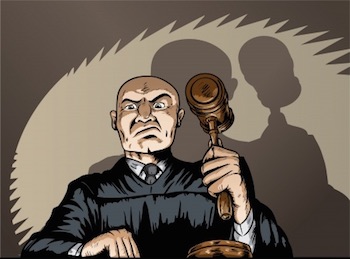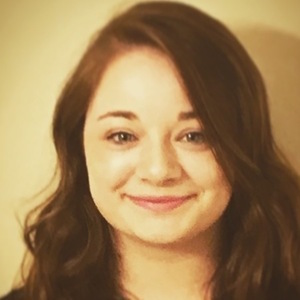 After considering the failed certiorari petition of Vehicle Intelligence v. Mercedes-Benz, some have wondered why patent eligibility was the only issue discussed throughout the Federal Circuit opinion? Based on the court’s own admission, one of the primary issues in the patent in question – U.S. Patent No. 7,394,392 – was that the claims did not discuss “how the expert system would be programmed to perform the screening,” or “how the expert system must utilize at least a portion of the various modules.” On its face these issues appear to lend themselves to invalidity based on 35 USC §112(a), not invalidity under 35 U.S.C. §101. After all, §101 has historically been viewed as a coarse filter that is intended to only weed out the most obviously patent ineligible inventions and not to act as the final arbiter on patentability. See Research Corporation Technologies, Inc. v. Microsoft Corporation, 627 F.3d 859 (Fed. Cir. 2010); Classen Immunotherapies, Inc. v. Biogen IDEC, 659 F.3d 1057 (Fed. Cir. 2011). Further, §112 is supposed to ensure that the patent provides an adequate description of the invention and its various aspects.
After considering the failed certiorari petition of Vehicle Intelligence v. Mercedes-Benz, some have wondered why patent eligibility was the only issue discussed throughout the Federal Circuit opinion? Based on the court’s own admission, one of the primary issues in the patent in question – U.S. Patent No. 7,394,392 – was that the claims did not discuss “how the expert system would be programmed to perform the screening,” or “how the expert system must utilize at least a portion of the various modules.” On its face these issues appear to lend themselves to invalidity based on 35 USC §112(a), not invalidity under 35 U.S.C. §101. After all, §101 has historically been viewed as a coarse filter that is intended to only weed out the most obviously patent ineligible inventions and not to act as the final arbiter on patentability. See Research Corporation Technologies, Inc. v. Microsoft Corporation, 627 F.3d 859 (Fed. Cir. 2010); Classen Immunotherapies, Inc. v. Biogen IDEC, 659 F.3d 1057 (Fed. Cir. 2011). Further, §112 is supposed to ensure that the patent provides an adequate description of the invention and its various aspects.
Let’s start with the statute. §112(a) states:
“the specification shall contain a written description of the invention, and of the manner and purpose of making and using it, in such full, clear, concise, and exact terms as to enable any person skilled in the art to which it pertains …”
Section 101:
“whoever invents or discovers any new and useful process, machine, manufacture, or composition of matter, or any new and useful improvement thereof, may obtain a patent therefor, subject to the conditions and requirements of this title.”
It seems as though once the court realized the claimed invention related to software, it pulled out its §101 goggles and ignored any other grounds for patent invalidity. Such an analysis, which pushes decision-making into 101, which is ill-suited to be used as such a brute force instrument, has perplexed and frustrated patent practitioners. Courts, including the Federal Circuit, simply disregard the other sections of the Patent Act in favor of §101, which for them is easier and leads to decision-making without the need of discovery and without presuming the issued patent is valid.
[Supreme-Court]
To tell the tale properly we need to go back to Diamond v. Diehr, decided by the Supreme Court in 1981. The invention there was related to a process for curing synthetic rubber wherein the claims involved well-known time, temperature and cure relationships by means of an established mathematical equation. There, the court discussed that, in determining the eligibility of a claimed process for patent, the “novelty of any element or steps in a process is of no relevance in determining whether the subject matter of a claim falls within the §101 categories of possibly patentable subject matter.” The court addressed the argument that novelty is an appropriate consideration under §101, resulting from the statutory language referring to and “new and useful” process, machine, etc. The court held that this is a general statement of the type of subject matter that is eligible for patent protection “subject to the conditions and requirements of this title.” The specific conditions for patentability are later described in the statute in §102, §103 and §112. Overall, the Supreme Court found that a rejection based on failure to satisfy the statutory conditions of novelty or nonobviousness does not affect the determination that claims recited subject matter, which was eligible for patent protection under §101.
While Diamond v. Diehr specifically warned about §102 improperly influencing the §101 analysis, a precedent was set wherein §101 analysis was presumably separate from a §102, §103 or §112 analysis. See In re Nuijten, 500 F.3d 1346, n. 3 (Fed. Cir. 2007), Ultramercial, Inc. v. Hulu, Inc., 722 F.3d 1335, 1341 (Fed. Cir. 2013)., Classen Immunotherapies, Inc. v. Biogen IDEC, 659 F.3d 1057, 1066 (Fed. Cir. 2011), MySpace, Inc. v. GraphOn Corp., 672 F.3d 1250, 1260 (Fed. Cir. 2012).
Fast forward a little more than a generation. In 2012, Mayo Collaborative Services v. Prometheus Laboratories, Inc. was decided by the Supreme Court, which appeared to flip the Diamond v. Diehr rationale on its head. Mayo v. Prometheus addressed the question of whether two patents concerning the use of thiopurine drugs to treat autoimmune diseases satisfied the §101 requirement. The Supreme Court ended up holding that the patents were invalid under §101, however, its reasoning sparked fury in the eyes of many patent practitioners and litigators. Justice Breyer, writing for a unanimous Court, stated that, because the steps of “administering” and “determining” were well known and conventional, they lacked patent eligible subject matter. This statement combined the requirement of patent eligibility with that of novelty and nonobviousness. In other words, in Mayo the Supreme Court did what it specifically warned against doing in Diehr.
In the years since Mayo, the Supreme Court has further embarked down the path to modify §101 precedent, as seen in Myriad and Alice. Since the Mayo decision, district courts have been disposing cases on motions to dismiss under §101. The presumption of patent validity is nonexistent in the review of a §101 motion to dismiss, and the decisions are reached by the district court without the benefit of discovery and without having interpreted the claims. What this means is that in many patent-eligibility appeals §101 is the only issue available to discuss because it is the only issue that has been considered.
The failure of patents to be presumed valid at the early motion to dismiss state is truly dismaying. Patents are statutorily supposed to be presumed valid pursuant to 35 U.S.C. 282, but for some reason when the question is about patent eligibility that presumption does not attach. Indeed, a careful reading of §282(a) reveals that it merely says that patents are presumed valid. §282(a) states:
A patent shall be presumed valid. Each claim of a patent (whether in independent, dependent, or multiple dependent form) shall be presumed valid independently of the validity of other claims; dependent or multiple dependent claims shall be presumed valid even though dependent upon an invalid claim. The burden of establishing invalidity of a patent or any claim thereof shall rest on the party asserting such invalidity.
No where in §282 does it say that patents are presumed valid unless patent eligibility is challenged, yet patents are invalidated without the benefit of discovery, without the benefit of a claim construction and without being given the presumption of validity the statute promises the patent owner who endures what is a long and increasingly arduous (not to mention costly) examination process at the Patent Office.
Unfortunately, §102, §103, and §112 issues can and do get wrapped into the court’s §101 reasoning, thus resulting in opinions with no differentiation. In the end, courts are forcing a round peg into a square hole when they seek to turn the patentability test into a single factor test analyzed under §101. Such a reworking of the patentability test is contrary to what the Supreme Court said in Diehr, and it violates the statutes passed by Congress. In essence, the courts are legislating from the bench when they consider novelty, obviousness and description under §101. So if you are confused by why decisions are relying on §101 when other sections of the statute seem far better suited you are not alone.

![[IPWatchdog Logo]](https://ipwatchdog.com/wp-content/themes/IPWatchdog%20-%202023/assets/images/temp/logo-small@2x.png)


![[Advertisement]](https://ipwatchdog.com/wp-content/uploads/2024/04/Patent-Litigation-Masters-2024-sidebar-early-bird-ends-Apr-21-last-chance-700x500-1.jpg)

![[Advertisement]](https://ipwatchdog.com/wp-content/uploads/2021/12/WEBINAR-336-x-280-px.png)
![[Advertisement]](https://ipwatchdog.com/wp-content/uploads/2021/12/2021-Patent-Practice-on-Demand-recorded-Feb-2021-336-x-280.jpg)
![[Advertisement]](https://ipwatchdog.com/wp-content/uploads/2021/12/Ad-4-The-Invent-Patent-System™.png)







Join the Discussion
One comment so far.
Appearance of …
June 15, 2016 12:23 pmThe UK Supreme Court cannot overrule primary acts of Parliament, and a number of other countries also impose similar type limits.
The fact that the US Supreme Court can do so is essentially a “bug” in our Constitution. Had the original writers contemplated the concept, they almost certainly would have put in the same checks and balances that they imposed on the other branches of government.
But instead, the US Supreme Court gave itself the power, without imposing any checks and balances on itself.
At some point, there will probably be another constitutional amendment that does impose such checks and balances. When judicial restraint is lacking, the need for such an amendment becomes more apparent.